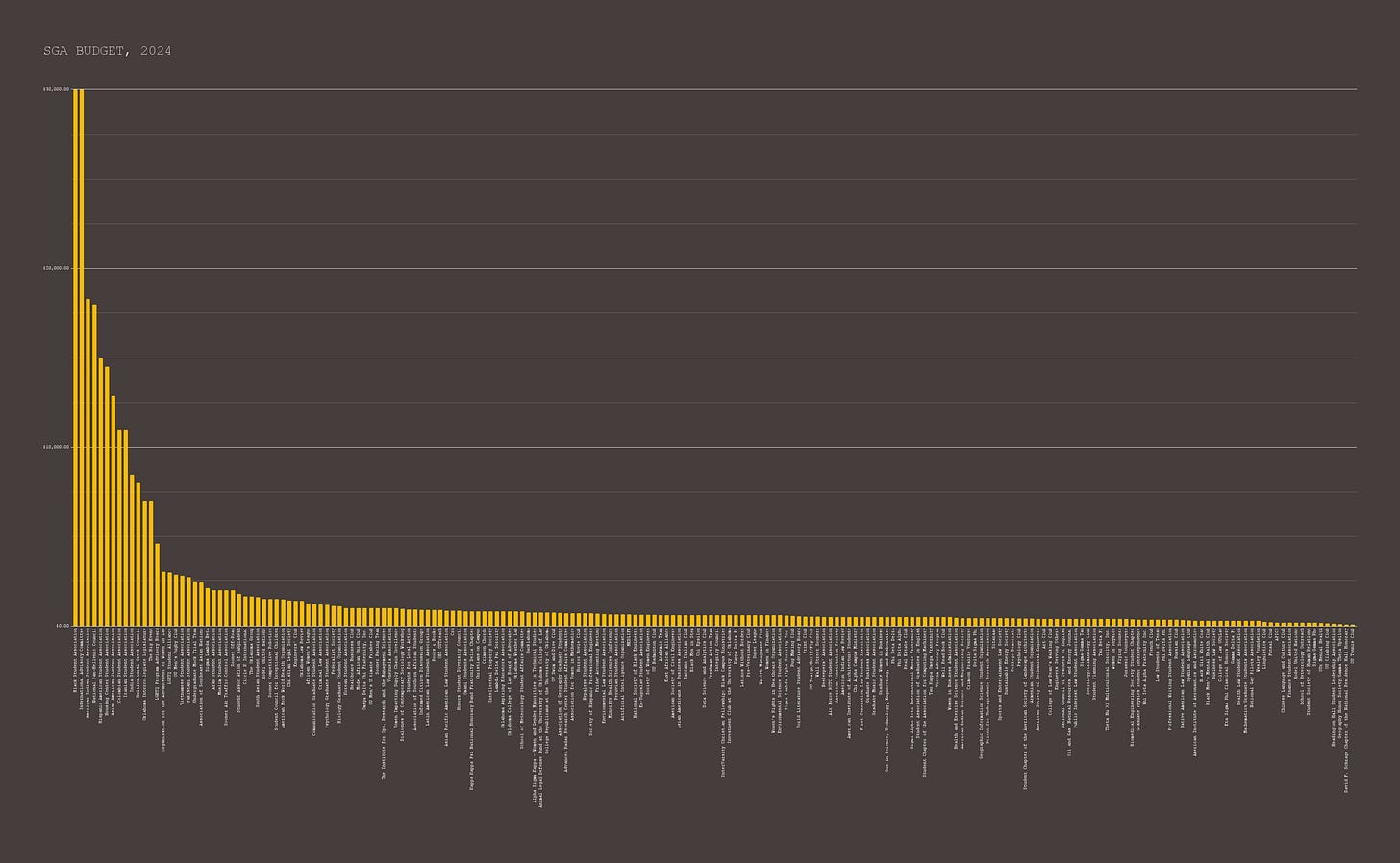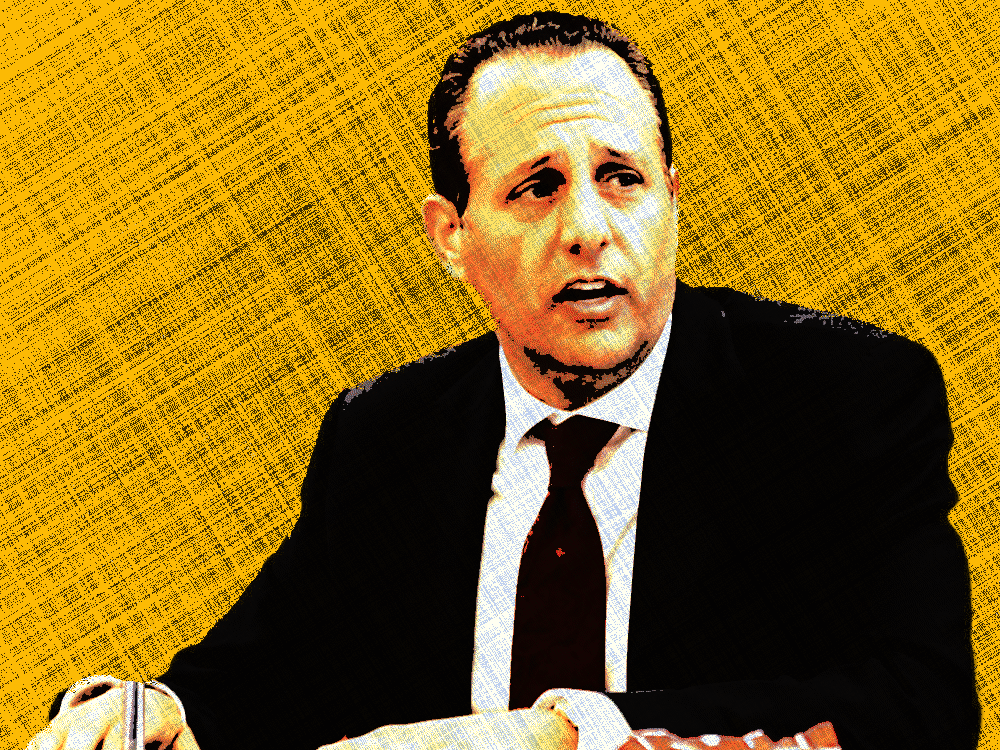Special Report: University of Oklahoma to Cut Identity-based Student Groups
The University of Oklahoma is planning on terminating its funding for diversity-oriented student organizations.How did we get here?
It is a grand irony of history that the conservative movement would make itself an enemy of self-segregation, but it’s no surprise that the University of Oklahoma would be part and parcel in this history. According to an anonymous source close to the administration, the university is moving to divest from identity-based student groups.
American conservatism as we know it today is a relatively new ideology that largely developed during the Cold War as a reaction to their perceived failures of liberalism. In its first major public breakthrough, the conservative movement rallied behind Barry Goldwater, a civil libertarian who opposed the 1964 Civil Rights Act on practical grounds. Though he lost in a landslide, he became the first Republican in nearly a century to win over the white South. In the 1970s, the conservative movement supported President Nixon as he railed against unpopular busing programs that sought to forcibly integrate public schools by sending black students to racist white suburban schools, and white students to poor urban black schools.
In its short history, the conservative movement has often defended those wishing to mind their business, even to the exclusion of others: ethnic minorities, women, and homosexuals. This idea was a central tenet of the so-called ”Southern Strategy”, which appealed to southern white racism by layers of abstraction: from racial slurs and Jim Crow to states’ rights and the “welfare queen”. While the conservative movement in its early years defined itself in opposition to populist Dixiecrats like George Wallace, it has scarcely favored explicit efforts to promote integration.
All along, the University of Oklahoma has found itself a stick in a flowing river. It was the defender in a landmark 1948 Supreme Court case that prohibited racial discrimination in admissions; it has since gone on to honor the memory of Ada Sipuel, the Black law student who sued them for their backwardness. A mere two years later, it was the defender in another Supreme Court case that prohibited segregation on campus.
Despite court rulings and changing policies, practical integration at the university has not been a lightning strike, but a molasses wave. Dr. George Henderson, an OU professor sometimes referred to as a trailblazer for his civil rights activism, has discussed this slow pace of change. When he began teaching here in 1983, interracial couples were still harassed, confederate flags still adorned many windows, and Black students were still called racial slurs on their walks to class. These were not rare aberrations, but a common indignity endured by generations of alumni for merely existing on this campus. In my freshman year, I remember donning a mask in the late hours of the night and wandering about the barren blue halls of the now-destroyed Adams Tower, once the university’s premier segregated dormitory.
Following a summer of tense, sometimes violent, racial justice protests in 2020, our social, state, and economic institutions responded. Weary of the slow tick of social change, a vanguard of increasingly left-wing, disproportionately white professionals tried to push forward the clock’s arms. The Great Awokening was in full swing. Overnight, video games, social media feeds, and football fields were consumed with black boxes as a symbolic show of solidarity. Major corporations made lofty promises to fight racism in their culture, hiring practices, and supplier relations. The newly inaugurated President Biden, an outspoken opponent of integrated busing in the 1970s, signed an executive order calling for a “comprehensive approach to advancing equity for all”. The University of Oklahoma launched mandatory diversity training for all students and staff in August of 2020.
Backlash from the right was as quick as it was decisive. Reformed from their days in the Nixon administration, when they advocated for the rights of racial groups to self-segregate, this new generation of conservatives took issue with what they branded “woke”. Rejecting a burgeoning status quo, the conservative activist Christopher Rufo wrote about the ghost of Jim Crow, criticizing racially segregated training programs, school events, and vaccination distribution in liberal domains. The Heritage Foundation chronicled incidents of resegregation in higher education, delivery apps, and government at all levels. Last year, noted conservative commentator Matt Walsh asked “Am I Racist?” in his comedic documentary on the excesses of liberal diversity efforts, questioning why white academics should feel entitled to benefit from anti-black racism and why white liberals would pay money to be told that they bear a shameful scar left by their country's racist past. The modern conservative movement looked upon the growing woke ideology, not as a boon to civil rights, but a threat to gains. “We have abolished legal distinctions based on race,” they said, “Why is it towards these concepts that this new social movement runs?”
But our university held firm to its program. In response to an executive order from Oklahoma’s Republican governor that prohibited DEI programs in state government, President Harroz defiantly stated that “Though we are obligated to comply with the governor’s executive order, we will remain committed to ensuring an education from the University of Oklahoma remains accessible and available to all.” He denounced the executive order as “a step backward” and declared that this university’s values “transcend political ideology, and in them, we are unwavering.” He declared that the university would continue along the charted course: “Together, we deserve nothing less.”
On January 20th 2025, President Trump signed an executive order prohibiting DEI programs in the federal government. This time, the mood seems different.

According to an anonymous source, the University of Oklahoma is preparing for the worst. A recipient of federal funding, the University is in consultation with its many self-segregating student organizations. Scrolling through a list of clubs at our university, there are Greek life councils and multicultural Greek life councils; student associations and Black student associations; trade associations and minority trade associations. In a previous piece, I observed that nine out of the top ten recipients of university funding are explicitly identity-based student groups.
These organizations are mainstays at the university, and the Student Government Association adores them. They have a long record of successful events under their belt: specialty dinners, historic commemorations, and welcoming programs for freshmen in their in-group. The common view among the SGA is that they win their large budgets through their deeds.
Per President Trump’s executive order, the university has told many of these organization’s leaders to prepare to rebrand, dissolve, or deregister.
There is a certain air of desperation, and hearts are heavy. For fear of retribution, President Harroz himself is conducting this business via his personal email account. Everything is hush-hush. When the governor issued his executive order, there was a certain sense that, if the university could weather this storm, it could retain its diversity programs. In January 2024, I attended a meeting regarding the future of funding for international student groups. There was a widely held belief that, while the mechanisms might change, the university’s policies would not. The siege would relent and the state would retreat. The university would retain its diversity programs under any other name, and the state would declare victory.
It’s hard to know what the future holds now.
While nothing is public yet, it seems that the university now feels compelled to act with a heavy heart. As of now, we don’t know who all is on the chopping block, nor do we know how severe the divestment will be. Undoubtedly, when they eventually issue a statement, the university will put on a brave face, but it will be that of a soldier permitted to bear his flag as he submits to his conqueror.
Many advocates for DEI programs haven’t lost hope yet. Lawyers across the country are launching lawsuits to preserve their clients’ DEI programs, criticizing Trump’s executive orders on the matter as “vague and unconstitutional”. But it seems the University of Oklahoma will not be such a challenger. Change is coming to our university and it remains to be seen what this change will mean. Undoubtedly, this reform will become yet another chapter in our university’s storied struggle with history, identity, and equality.
An all-too-American debate: we are deciding what it really means when we declare that all men are created equal, subject to equal protection under the law.
I would like to thank my sources for their collaboration with me on this piece.



I'm suddenly rediscovering your Substack, and am really impressed with what I'm seeing. I hope you plan to write some new posts over the summer!